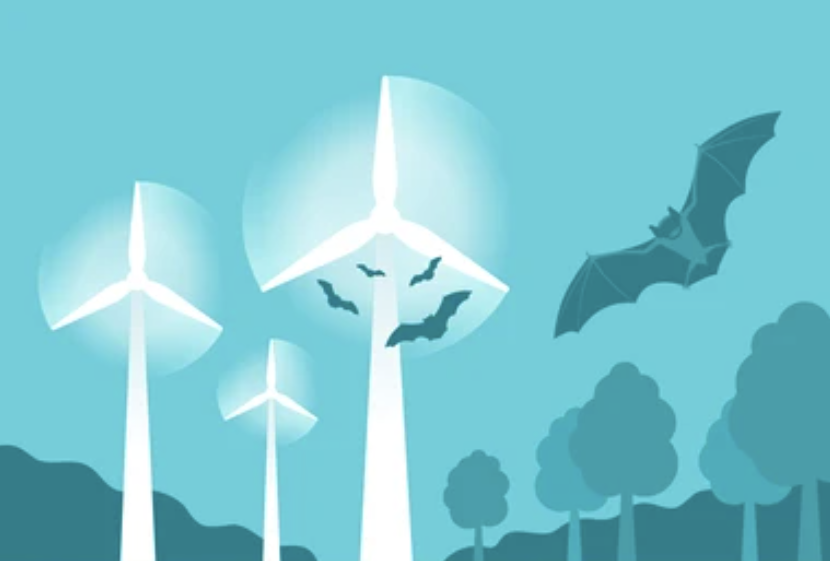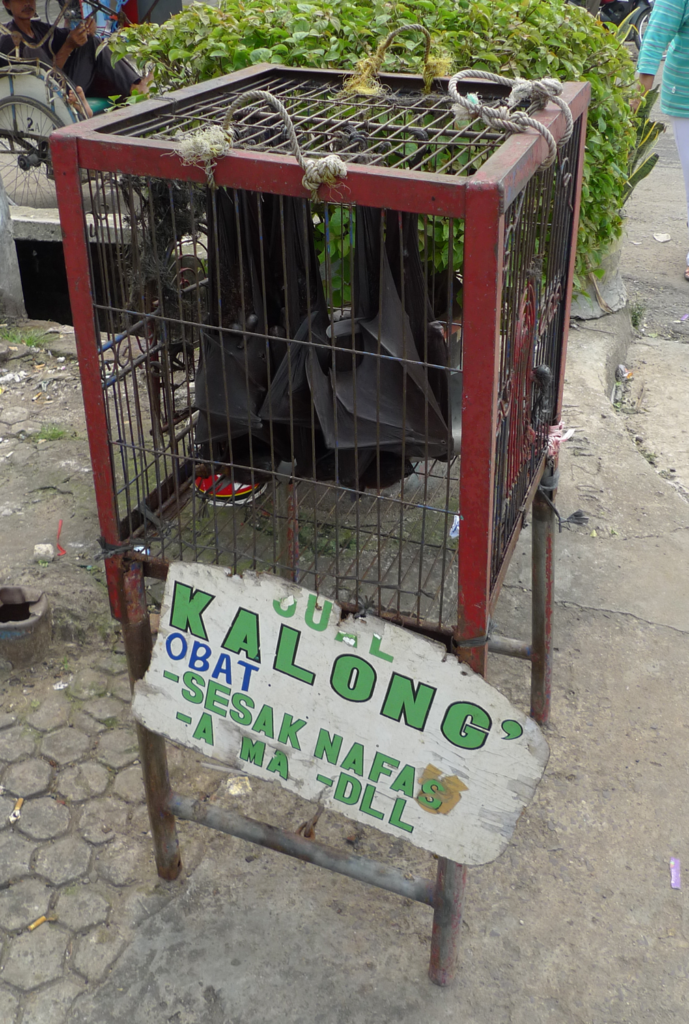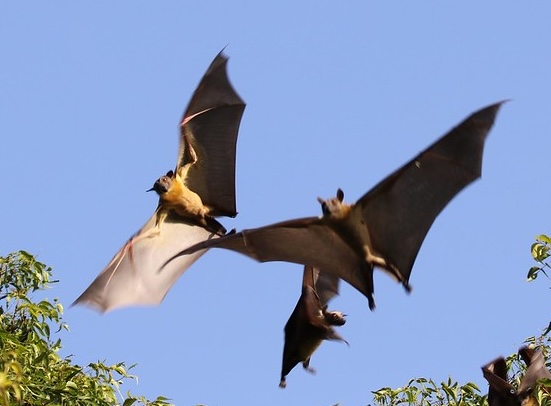GBatNet Positions for CMS COP14
Samarkand, Uzbekistan
12-17 February 2024
With over 1400 species, bats constitute the second largest group of mammals and are found on every continent except Antarctica. They fulfill critical roles in natural ecosystems as seed dispersers, pollinators, and pest control. Yet, almost a fifth of all bat species are considered threatened by the IUCN (Frick, 2020). The threats that they face include but are not limited to habitat loss and conversion, hunting, invasive species, climate change, and persecution. Particular aspects of their natural history put bats especially at risk, including low reproductive rate and concentration of populations in large colonies. The persistence of bat species is inexorably tied to human wellbeing, local livelihoods, and healthy ecosystems, and more direct action to address threats is needed.
Below are comments and considerations for CMS Parties on selected COP14 agenda items.
30.3.2 Renewable Energy and Migratory Species
GBatNet supports the recommended actions to COP14 in Doc.30.3.2. Specifically, GBatNet recognizes the achievement of the CMS Energy Task Force in completing and publishing the Post-construction Bird and Bat Fatality Monitoring Good Practice Handbook in 2023. The Handbook is an important step toward ensuring compliance with no net loss of bat species from global expansion of wind energy developments. GBatNet supports implementation and use of the Handbook and Decision Support Tools to inform conservation and mitigation action for bats globally. However, post-construction monitoring must be used in an adaptive management framework that informs mitigation actions in order to prevent significant population loss of bats from wind energy installations. Mitigation actions may require imposing operational constraints of wind turbines to reduce bat fatalities.

Millions of bats are killed each year at wind energy installations globally. Long-distance migratory bat species are the most vulnerable to turbine collisions based on extensive data from North America and Europe and emerging data from the Global South. Immediate implementationof the mitigation hierarchy is needed to protect migratory bats from rapidly expanding wind energy development. The most effective form of mitigation is operational curtailment to minimize bat fatalities. Operational curtailment schemes can use local information on high collision risk periods to maximize power production while minimizing bat fatalities. High collision risk periods include seasonal periods of migration and local weather conditions (e.g. wind speed). Feathering turbine blades below the turbine manufacturer’s cut-in speed can substantially reduce bat fatalities and incurs negligible power loss and should become a global standard of practice.
Siting decisions during project planning phases should include assessment of risk to bats and require avoiding areas in proximity to major roost locations and migratory routes. Compensation with offsets, such as roost protections or habitat restoration, should be required at appropriate temporal and spatial scales to ensure sustained viability of migratory bats over the decadal operating timespan of wind energy facilities.
GBatNet recognizes the need to ensure that wind energy development can meet its potential for decarbonizing energy production without causing biodiversity loss. GBatNet supports the CMS ETF in ensuring best practices are developed and adopted to protect migratory bats globally.
Additional reading:

30.1.1. Priorities for addressing illegal and unsustainable taking of migratory species
GBatNet supports the recommended actions presented in Doc.30.1.1/Rev.1 and strongly urge CMS Parties to take the recommended actions to eliminate illegal and unsustainable take. Approximately 20% of bat species are threatened by hunting, with increased risk for large-bodied, tropical fruit bats that are found primarily in very limited geographic ranges. Hunting and taking of better-known species of bats can vary in purpose, spanning from trade as a souvenir item, consumption as a protein source, use as medicine, or persecution due to negative perceptions of bats. Activities to improve understanding of the drivers, scope, and scale of the illegal and unsustainable take of migratory bats are especially needed. Parties and non-Parties need to engage in more cooperative bilateral and multilateral management activities, population estimation and monitoring, and training to effectively address illegal and unsustainable take throughout a species’ range.
Additional reading:
Mildenstein, Tammy, Iroro Tanshi, and Paul A. Racey. "Exploitation of bats for bushmeat and medicine." Bats in the Anthropocene: conservation of bats in a changing world (2016): 325-375. https://doi.org/10.1007/978-3-319-25220-9_12
Tackett, E. S., T. Kingston, N. Sadeghmoghaddam, and A. L. Rutrough. 2022. Global Medicinal Use of Bats: A Systematic Literature and Social Media Review. Diversity 14. https://doi.org/10.3390/d14030179
Tanalgo, Krizler Cejuela, Tuanjit Sritongchuay, Angelo Rellama Agduma, Kier Celestial Dela Cruz, and Alice C. Hughes. "Are we hunting bats to extinction? Worldwide patterns of hunting risk in bats are driven by species ecology and regional economics." Biological Conservation 279 (2023): 109944. https://doi.org/10.1016/j.biocon.2023.109944
GBatNet supports the implementation of the proposed concerted actions presented in Doc.32.3.2 and recommends that Parties in the species range engage in multilateral activities in cooperation with relevant stakeholders and experts. The proposed activities would provide a pathway for development of a transboundary monitoring program, raise capacity for monitoring and conservation in range states, implement actions that reduce direct exploitation, and raise awareness of the conservation status of E. helvum in range states. Eidolon helvum is currently listed as Near Threatened on the IUCN Red List, but recent declining population trends point to a need to raise the species to Vulnerable. Since this bat species engages in one of the largest mammal migrations in Africa, multilateral action from Parties is needed to protect the species across the entirety of its range. Maintenance of large colony size is a critical component to promoting collective migratory behaviour. Protecting remaining large colonies of E. helvum is critical, as continued decline of this species would mean the loss of a keystone seed disperser and pollinator in Africa.

Additional Reading:
Abedi-Lartey, Michael, Dina KN Dechmann, Martin Wikelski, Anne K. Scharf, and Jakob Fahr. "Long-distance seed dispersal by straw-coloured fruit bats varies by season and landscape." Global Ecology and Conservation 7 (2016): 12-24. https://doi.org/10.1016/j.gecco.2016.03.005
Hurme, Edward, Jakob Fahr, Eidolon Monitoring Network, Bakwo Fils Eric‐Moise, C. Tom Hash, M. Teague O'Mara, Heidi Richter et al. "Fruit bat migration matches green wave in seasonal landscapes." Functional Ecology 36, no. 8 (2022): 2043-2055. https://doi.org/10.1111/1365-2435.14097
